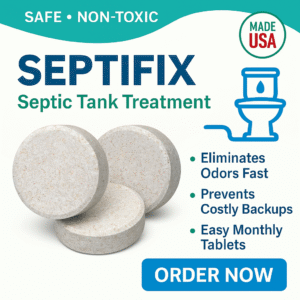Choosing the right toilet for your home can be a daunting task, given the variety of options available. Whether you’re remodeling your bathroom or replacing an old toilet, it’s important to consider factors such as comfort, water efficiency, design, and installation requirements. This guide will help you navigate the key considerations for choosing the perfect toilet for your needs.
1. Consider the Toilet Type
The first step in choosing a toilet is determining the type that best suits your needs. There are several common types of toilets to consider:
- Two-Piece Toilet: This is the most common type, where the tank and bowl are separate. It’s affordable, easy to repair, and widely available.
- One-Piece Toilet: The tank and bowl are combined into a single piece. These toilets are sleek, easier to clean, and have a more modern appearance, but they tend to be more expensive.
- Wall-Mounted Toilet: The tank is hidden inside the wall, and the bowl is suspended from the wall. These toilets have a modern look and make cleaning the floor easier but can be costly to install.
- Smart Toilets: These high-tech toilets come with advanced features like heated seats, bidet functionality, and automatic flushing, offering enhanced comfort and luxury.
2. Toilet Size and Dimensions
When choosing a toilet, size matters. You need to ensure that the toilet fits comfortably in your bathroom and aligns with the plumbing system. Here are some key size considerations:
- Rough-In Size: The rough-in size refers to the distance from the center of the drain pipe to the wall behind the toilet. Standard rough-in sizes are 10, 12, and 14 inches, but most toilets use the 12-inch rough-in. Measure your existing toilet’s rough-in size to ensure compatibility with your new toilet.
- Toilet Bowl Shape: Toilets come in round or elongated bowl shapes. Round bowls are more compact and ideal for smaller bathrooms, while elongated bowls are more comfortable for adults and offer more seating space.
- Height: Toilets come in standard height or comfort height. Comfort height toilets are 17-19 inches high (the same height as a typical chair) and are ideal for people with mobility issues or those who prefer a taller seat.
3. Water Efficiency
Water efficiency is an important factor when choosing a toilet, especially if you want to reduce your water usage and lower your water bill. Look for toilets with the following features:
- WaterSense Certification: Toilets with this certification meet U.S. Environmental Protection Agency (EPA) standards and use no more than 1.28 gallons per flush (GPF), making them highly water-efficient.
- Dual Flush Toilet: These toilets offer two flush options: one for liquid waste (using less water) and one for solid waste. Dual flush toilets help conserve water and are ideal for those who want flexibility in water usage.
- Single Flush Toilets: These toilets use a single flush for both liquid and solid waste. While they tend to use more water than dual flush toilets, modern single flush models are often more efficient than older models.
4. Toilet Flushing System
The type of flushing system in a toilet determines how efficiently waste is removed from the bowl. There are several flushing mechanisms to consider:
- Gravity Flush: The most common and simple flushing system, using the force of gravity to push waste through the drain. It’s reliable, efficient, and less prone to malfunctions.
- Pressure-Assisted Flush: This system uses pressurized air to assist with flushing, providing a stronger flush. It’s ideal for homes with a low water supply or for those who want a more powerful flush.
- Macerating Flush: Used in toilets with pumps, this system grinds up waste and pumps it into the sewer or septic system. It’s typically found in toilets with unusual placements or in basements.
5. Consider Toilet Features
Modern toilets come with a variety of features that can enhance your bathroom experience. Some of these features include:
- Heated Seat: Ideal for colder climates, a heated toilet seat adds comfort and luxury to your bathroom experience.
- Self-Cleaning: Some high-end toilets come with self-cleaning features that help keep the bowl fresh with minimal effort. These toilets often use special cleaning solutions or UV light to sanitize the bowl.
- Bidet Function: A built-in bidet provides a hygienic alternative to toilet paper and adds comfort to your toilet experience.
- Soft-Close Lid: A soft-close lid prevents the lid from slamming down and reduces noise, providing a more pleasant and gentle toilet experience.
6. Installation and Maintenance
Some toilets are easier to install and maintain than others. When choosing a toilet, consider how easy it is to install and whether you will need professional help. Also, consider how easy the toilet is to clean and maintain, especially in hard-to-reach areas like the tank, bowl, and seat.
- DIY Installation: If you prefer to install the toilet yourself, look for models that come with clear instructions and that are relatively easy to install.
- Professional Installation: Some toilets, especially more complex models with advanced features, may require professional installation.
7. Budget Considerations
The price of a toilet can vary greatly depending on the type, features, and brand. Toilets can range from budget-friendly models to high-end, luxury options. It’s important to set a budget before you start shopping and decide what features are most important to you. While higher-end models with advanced features can offer comfort and convenience, a standard, efficient toilet may be all you need.
Conclusion
Choosing the right toilet involves considering factors such as size, flushing system, water efficiency, and features that suit your lifestyle and preferences. By evaluating the space in your bathroom, your budget, and any specific requirements such as comfort height or water conservation, you can find the perfect toilet for your home. Whether you choose a simple gravity flush toilet or a high-tech smart toilet, the right toilet will improve your bathroom experience and help save on water costs.
